Distribution Records
PDF
Vetting Levels |
|
Adult phenology:
High Mountains (HM) ≥ 4,000 ft.
Low Mountains (LM) < 4,000 ft.
Piedmont (Pd)
Coastal Plain (CP)
Click on graph to enlarge
|
 |
|
| synonym | |
| taxonomic_comments |
Approximately 30 species in this genus have been identified as occurring in North America north of Mexico (Cokendolpher and Lee, 1993; Ingianni et al., 2011), with 16 recorded in North Carolina. However, the validity of several of these species is suspect, with several that will probably be determined to be synonyms of other species, e.g., davisi, speciosum, and zimmermani in North Carolina Burns et al., 2012; Shultz, 2018). According to Shultz (2018), moreover, recent phylogenetic studies indicate both that more species are waiting to be described and that the name Leiobunum may eventually be restricted to European species, requiring new generic names for most, if not all, of our species. |
| species_comment |
Placed in the Leiobunum vittatum Species Group by Burns et al. 2012) based on both reproductive structures and genetic analysis. In North Carolina, this group also includes L. vittatum. |
| id_comments |
The dorsal surface of the males is golden yellow; the central figure is obsolete or faint. The ventral surface and coxae are cinnamon brown. The palpi are yellow but the legs are dark brown or black; the dark trochanters contrast strongly with the paler coxae (Davis, 1934). In females, the dorsum is light brown and the venter is noticeably lighter (Davis, 1934). The central figure is dark brown with light spots; the area lateral to the central figure is golden brown, also with light spots (Shultz, 2018). |
| total_length |
4 mm, males; 6.5 mm, females (Davis, 1934) |
| structural_features |
In males, the abdomen is trucated posteriorly; in females, it is rounded. |
| silk_web |
|
| fld_guide_descriptions |
|
| online_photos |
BugGuide, The Harvestmen of Maryland |
| prey |
|
| predators |
|
| behavior |
|
| distribution_reference |
Crosby and Bishop (1924); Brimley (1938) |
| technical_reference |
Davis (1934); Shultz (2018) |
| adult_id | 1 identifiable by photo 2 identifiable by photo of specific features and/or supplementary info 3 identifiable from specimen only |
| abundance |
We currently have too few records from North Carolina to judge its frequency of occurrence or abundance |
| distribution_comments |
We have records from the High Mountains to the Coastal Plain |
checklist_mt_high
>=4,000 ft. | |
checklist_mt_low
<4,000 ft. | |
checklist_pd
Piedmont | |
checklist_cp
Coastal Plain | |
| habitat |
Crosby and Bishop (1924) reported seeing a large number of mating pairs on a sunny bank on the edge of a pine woods. |
| observation_methods |
This is a late season species, persisting into early winter (Shultz, 2018) |
| state_protection |
Arachnids are not protected under state law, although permits are needed to collect them in State Parks and other public and private nature preserves |
| NHP_ranks |
[GNR] [S3S5] |
| NHP_status |
|
| status_comments |
We have only one recent record for this species in the state but it appears to occupy a wide range within the state and does not appear to be habitat-limited. It will therefore probably be determined to be secure within the state. |
Photo Gallery for Leiobunum uxorium No common name |
 | Recorded by: Steve Hall, Carol Tingley, Tom Howard, David George, Pat Coin, Jeff Niznik,
Chatham Co.
Comment: | 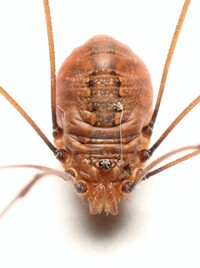 | Recorded by: Nathan Vaughan
Person Co.
Comment: |
 | Recorded by: Steve Hall
Orange Co.
Comment: Seen at moth sheet after midnight | 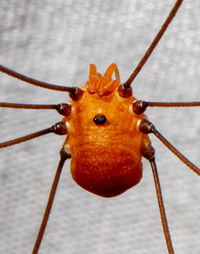 | Recorded by: Steve Hall
Orange Co.
Comment: Several seen at moth sheet |
 | Recorded by: Owen McConnell
Durham Co.
Comment: Photographed at 6:51 A.M. | 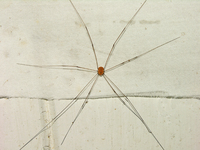 | Recorded by: Owen McConnell
Durham Co.
Comment: Photographed at 6:51 A.M. |
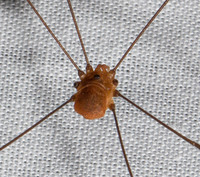 | Recorded by: Steve Hall
Orange Co.
Comment: Male, at moth sheet | 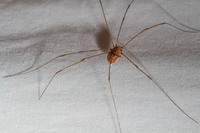 | Recorded by: Steve Hall
Orange Co.
Comment: Female; seen at moth seet |
 | Recorded by: Steve Hall
Orange Co.
Comment: Female; seen at moth seet | 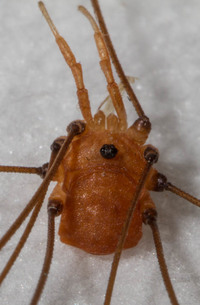 | Recorded by: Steve Hall
Orange Co.
Comment: Male |
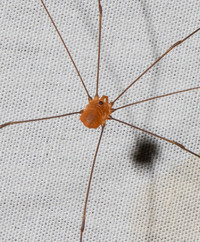 | Recorded by: Steve Hall
Orange Co.
Comment: |  | Recorded by: Steve Hall
Orange Co.
Comment: Male at moth sheet |
|